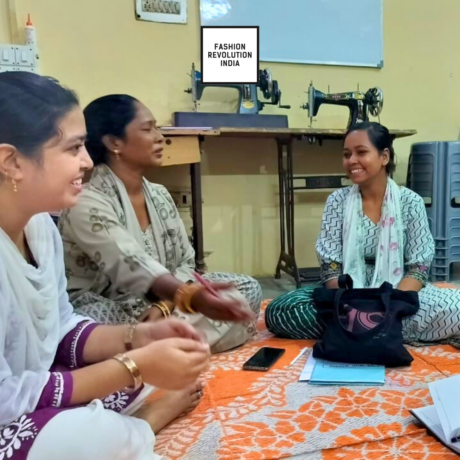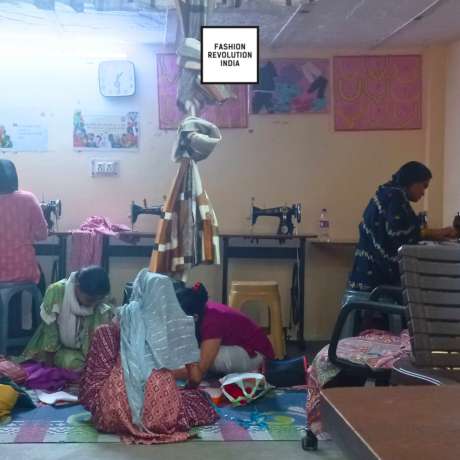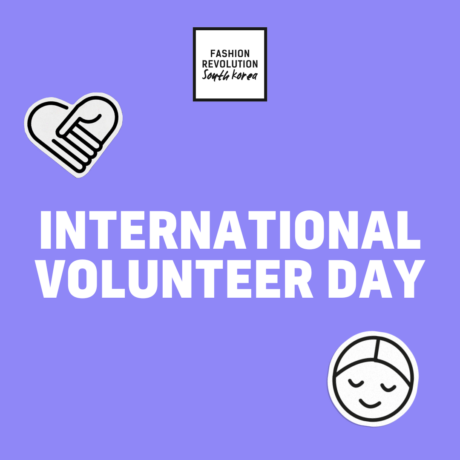Fashion’s role in fighting human trafficking, reducing vulnerability, and uplifting humanity
This is a guest post by Outland Denim, a business founded to offer opportunity, financial freedom, education, and support to women who have come from backgrounds of human trafficking, exploitation or vulnerability.
Header image: Cesar López
The impacts of Human Trafficking are widespread, and you’ll often see its prevalence illustrated in statistics (you’re about to read many in this article). But we can’t be reminded enough – these are real people, not figures. So we start this article with an excerpt of Chandramma’s story, published here on Fashion Revolution by International Justice Mission.
“Chandramma was offered work at a silk farm. But what looked like a chance for stability and a better life for her young family, was in reality a job under false promises. She tried to escape twice, but both times she was caught, brought back and beaten up.
She was punished, and trapped for 6 months in this hot, dark jail cell, with little food and almost no water… She and the other labourers were forced to work for 15-16 hour days twisting silk threads with one short break for food.
With the help of IJM and local authorities Chandramma’s story ended with her being found and freed.”(1)
Today, Chandramma is a wedding planner, a community advocate against forced labour, and is able to provide for her family.
She is just one of many impacted by this USD $150 billion industry.(2) That’s over twice the size of the USD $66 billion denim jean industry.(3)
In recognition of the UN’s World Day Against Trafficking, held annually on 30th July, we’re exploring trafficking’s connection to fashion and how some brands are supporting survivors with the help of your purchase.
Human trafficking is just one form of modern slavery, which is used as an umbrella term for different forms of severe exploitation, which also includes forced labour and forced marriage, and affects an estimated 40.3 million people globally.(4)
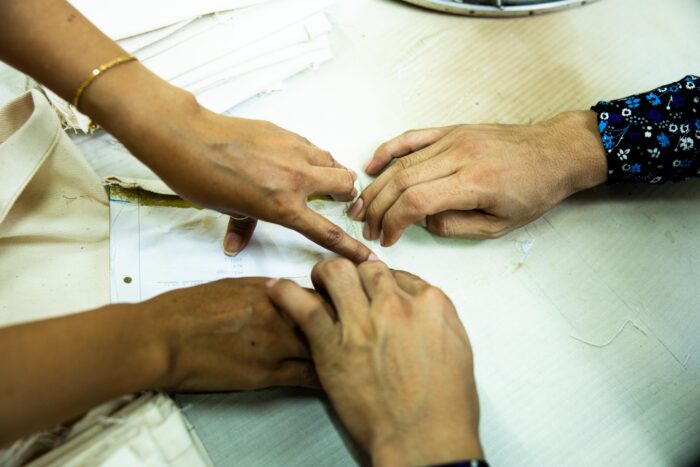
Who is most impacted by human trafficking?
Overwhelmingly, women are more likely to be vulnerable to human trafficking. In 2018, approximately 70% of identified victims were female, more specifically 50% women and 20% young girls.(5) To put this in perspective, one in every 130 women and girls globally are a victim of modern slavery.(6) So this is a very gendered issue.
People who have limited access to employment are particularly targeted. In fact, the United Nations identified that economic need was the greatest pre-existing factor to cases of identified trafficking, existing in 51% of cases.(7)
So how does human trafficking relate to the social injustice we see in fashion?
The garment industry is just one of many where trafficking in the form of forced labour, and the broader issue of modern slavery, can be found.(8)
Even where not categorised as forced labour, human rights abuses and work insecurity are rife in the garment making industry, further perpetuating cycles of economic vulnerability in individuals, particularly women, their families and communities.
To speak to economic stresses alone, approximately 1 in 8 working people rely on the fashion industry for their income, and yet only about 2% earn a living wage.(9) A living wage is a crucial protective mechanism against the scourge of modern slavery, human trafficking and exploitation.(10)
View this post on Instagram
Defining Forced Labour
One thing we want to make clear is that forced labour does not always equal worker exploitation or underpayment. They are nuanced issues, each situation as individual as the human it impacts. But, all are acts of exploitation targeting vulnerable people, occurring in the same supply chain ecosystem. So when organisations look into modern slavery in their supply chain, it’s the first step to identifying any kind of worker exploitation.
In their 2020 Global Report on Trafficking in Persons, the United Nations speaks to this:
“Although patterns of trafficking for forced labour vary across economic sectors, one aspect is true for all sectors: it is generally the result of a deterioration of labour rights, such as lower salaries, longer working hours, reduced protections and informal employment. The private sector therefore plays a pivotal role in the fight against trafficking, by conducting due diligence with respect to their supply chains and promoting regular controls on labour standards.”(11)
Exploitation thrives in the shadows, within complex, opaque global supply chains, from the cotton fields to the mills and factory floors. So brands need to invest heavily into supply chain mapping. But in this department, there is a long way to go.
Findings in Fashion Revolution’s 2022 Fashion Transparency Index illustrate how normalised this opacity is as you look further and further down the supply chain. It found that 48% of the world’s biggest 250 brands publish first-tier manufacturing. Go one step deeper to processing facilities and that drops to 32%, and again to 12% for raw material suppliers.(12)
When it came to disclosing procedures in place to identify and eliminate forced labour in supply chains, Fashion Revolution’s report actually shows brands going backwards, with 62% brands disclosing this year, a drop from 66% in 2020.(13)
Governments have begun in more recent years taking steps to mitigate local manufacturing and importing of goods at risk of having modern slavery in their supply chains with legislation requiring businesses to establish better mapping and due diligence. This began with the California Transparency in Supply Chains Act (TSCA), signed into law in 2010 and effective from 2012, the first act of its kind.(14) This was followed by the UK Modern Slavery Act (2015), the French Devoir de Vigilance Law (2017), the Australian Modern Slavery Act (2018), and more recently the United States’ Uyghur Forced Labour Prevention Act which took effect this past June.(15) Furthermore, the proposed New York Fashion Sustainability and Social Accountability Act (“Fashion Act”) would require fashion companies trading in New York to map and track at least 50 per cent of their supply chains.(16)
Brands are nervous to invest in looking for these instances of exploitation. It’s expensive, takes huge human resource investment, there are cultural and language barriers to navigate, strong relationships to establish, and of course, uncovering instances of exploitation would traditionally raise a red flag for the PR team.
However, we believe we need to shift toward a culture that is not afraid to uncover these instances of exploitation. Because without identifying them, we cannot fix them.
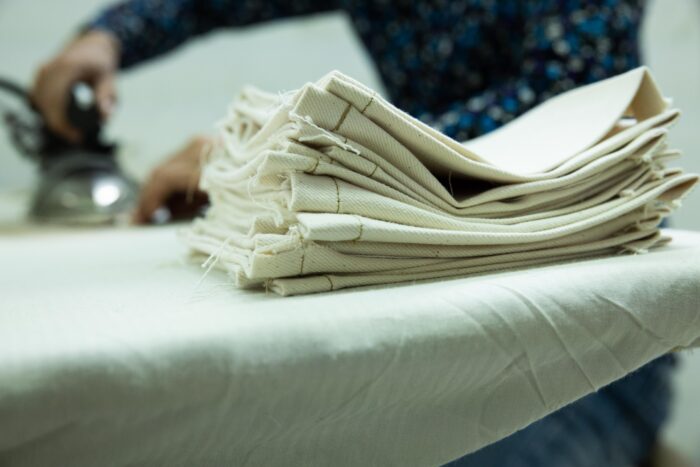
So supply chain transparency is the key that unlocks a brand’s ability to truly advocate for worker rights. But beyond the bare minimum of mitigating harm, could fashion one day actually be a force for good?
It may sound like a utopian goal, one far out of reach. But the fact is the fashion industry is worth $3 trillion – and with that kind of economic power, we can either do a lot of harm, or a lot of good.
In practice, one of the most impactful actions brands and manufacturers can take is to provide people who have experienced trafficking with much-needed training and employment.(17)
Outland Denim is dedicated to doing just that. The idea is to support women who have come from backgrounds of modern slavery with safe employment, education, and healthcare, that in turn allows them to support their families and contribute to the prosperity of their wider community.
One of our very first seamstresses told us that because of this opportunity she’d been able to build a home for her family who previously lived under a plastic sheet, as well as buy her sister out of bondage.
Today, some of our original makers have become team leaders. They’ve become the authors of their own futures, and now guide others as they do the same.
Fellow social enterprise The Tote Project also has a recruitment program that prioritises giving opportunities to survivors. Furthermore, they exclusively partner with FairTrade factories, and donate 10% of gross profits to Qualified, a non-profit that provides occupational therapy and career mentoring for survivors of trafficking.
“We’ve seen this model positively impact lives in so many ways. One semester there was an amazing woman named Carrie* going through the career academy at Qualified. We were honoured to get to donate and help fund the classes she was taking, and we even got to teach a couple of the business classes ourselves. We loved getting to know Carrie and seeing how well she was thriving, and after she graduated we got to hire her to do events for us. She was one of our best salespeople!” – Michelle Chavez, The Tote Project Co-Founder
*Carrie’s name has been changed to protect her privacy
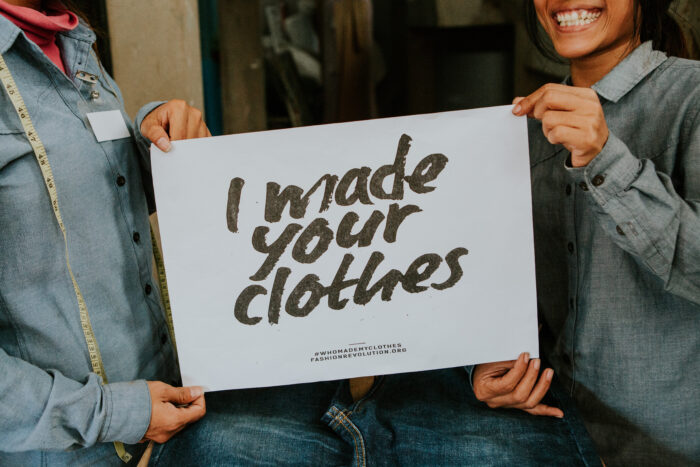
Beyond Fashion
It’s not just fashion; instances of exploitation and modern slavery are also common in the cocoa industry. Dutch chocolate brand Tony’s Chocolonely is on a mission to make slavery-free chocolate the norm, with sourcing principles designed to address the root cause of exploitation in the industry – poverty.
“We now have some really strong proof points to demonstrate that our 5 Sourcing Principles work. The child labour prevalence rate for the wider cocoa industry in West Africa is 46.5% – 1 in 2 children working illegally. In cooperatives that have been working according to Tony’s 5 Sourcing Principles this number drops to 3.9%. Last year, for the 3rd year in a row, we commissioned a Multidimensional Poverty Index (MPI) survey in the cocoa-growing communities we source from. In ABOCFA, the cooperative we have sourced from for the longest, the number of farmer households no longer living in poverty has increased from 71.6% to 83.7%. We also see more and more farmers reaching a living income.”
These are just a few brands, but with huge impact to share, and stories that make us hopeful. Hopeful that the fashion industry, and others too, can collaborate together in establishing strong supplier relationships, identifying risks of human trafficking and exploitation, offering opportunities to those in need, and ultimately uplifting humanity.
Further Reading:
Ending Forced Labor: An Opportunity to Advocate
Fashion’s opportunity to be a force for good, and show other industries how it’s done
International Women’s Day: Fashion Is Women’s Work
Human rights, transparency and accountability in fashion: A conversation on Uyghur forced labour




